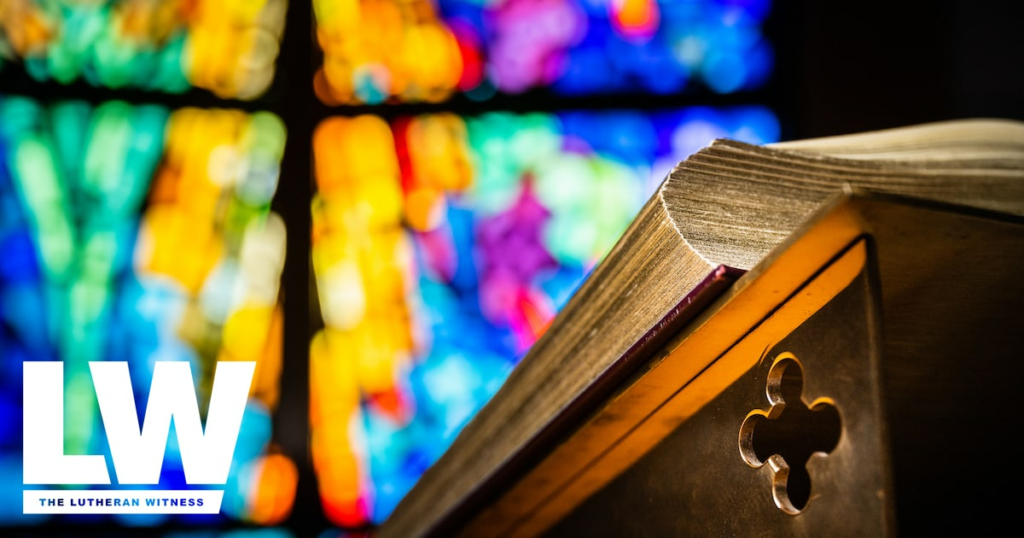by Rev. Dr. Greg Wismar
One of the best known songs of the holiday season is the perennial favorite, “The 12 Days of Christmas,” which has the 12 drummers drumming and the seven swans a-swimming and, of course, the partridge in the pear tree, among other things. Each year estimates are made as to how much money all of the gifts mentioned in the song would actually cost. Last year’s “Christmas Gift Price Index” stated that buying each of the 12 gifts once would cost about $24,000. Repeating them in the way the song does would bring the total to almost $100,000!
The focus on all these gifts of Christmastide might make for a memorable consumer celebration, but it would not at all reflect the intent of the original 12 Days of Christmas as established in the beginning years of the Christian Church.
From the earliest centuries A.D., each of the days that occurred between the Feast of the Nativity of Our Lord (Dec. 25) and the Feast of the Epiphany of Our Lord (Jan. 6) became an opportunity for Christians to remember special people of God whose lives were shaped by their faith in Jesus Christ, the Son of God born at Bethlehem. Those 12 days were true holy daysa concept that echoes in our word holidays. Wishing someone “Happy Holidays” can have special meaning for us and for those whom we greet if we take time to learn of those people of God originally remembered on the 12 Days of Christmas.
By commemorating certain devoted Christians, the Early Church underscored the truth that the Good News of the birth of Jesus is to be reflected in the lives of His faithful people. Rather than focusing on French hens and golden rings, the Church remembered some of her saints. The first days of Christmas after Christmas Day itself were given to commemorating well-known Bible people: St. Stephen, the first martyr (Dec. 26); St. John, apostle and evangelist (Dec. 27); and the Holy Innocents, the infants of Bethlehem who were killed at the order of King Herod, who sought in vain to find and execute the baby Jesus (Dec. 28).
Although the people remembered by the Church on the fifth through twelfth days of Christmas are not as well known, each of them serves as an example of faith active in Christian life. Trophimus (Dec. 29) was a companion to Saint Paul on his third mission journey (Acts 20:4). Anysia (Dec. 30) was a Greek lady from the third century who gave away her family fortune to help the poor. Sylvester, the Bishop of Rome in the fourth century, was a builder of great churches, including St. Peter’s and St. John’s Lateran basilicas in Rome (Dec. 31).
Concordius (Jan. 1) was a deacon martyred in Italy in A.D. 178. Macarius of Alexandria (Jan. 2) established rules for religious communities in Egypt, and Antherus (Jan. 3) supervised the copying and preservation of early Christian records. Rigobert of Rheims (Jan. 4) devoted his ministry to settling ecclesiastical disputes in France, and Syncletica (Jan. 5) lived out her life giving spiritual counsel to women in her area of Egypt in the fourth century A.D.
The people of the 12 Days of Christmas observed from the earliest Christian era are varied both in their geographical locations and centuries in which they lived, but are united by their devotion to the Christ Child. Recalling these saints helps us in our place and time to keep a right and blessed perspective on the 12 Days of Christmas.
DECEMBER
21: St. Thomas, Apostle
26: St. Stephen, Martyr
27: St. John, Apostle and Evangelist
28: The Holy Innocents, Martyrs
31: Eve of the Circumcision and Name of Jesus
New Year’s Eve
Dates courtesy LCMS.org
—
> Read more about church year commemorations.
About the author: The Rev. Dr. Greg Wismaris pastor emeritus of Christ the King Lutheran Church, Newtown, Conn.
December 2011






